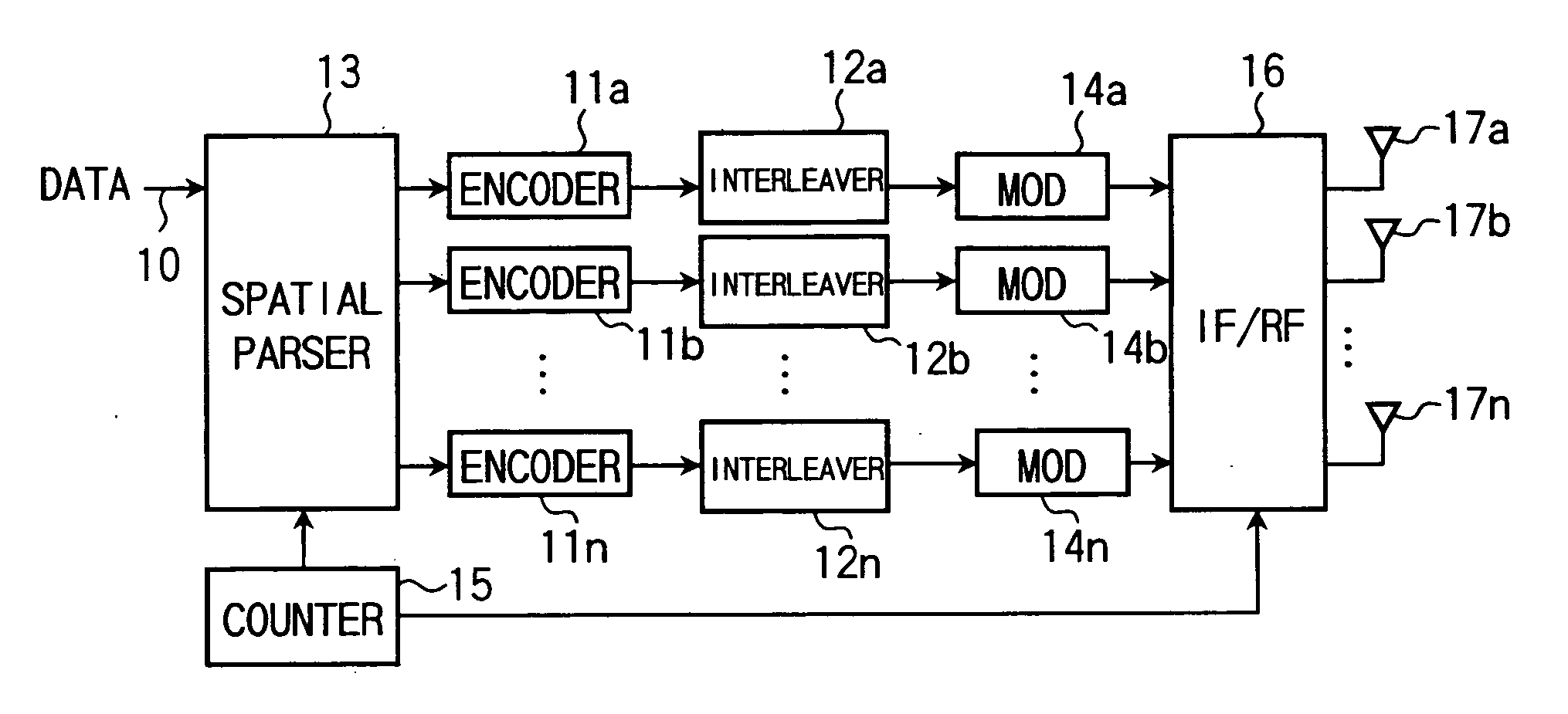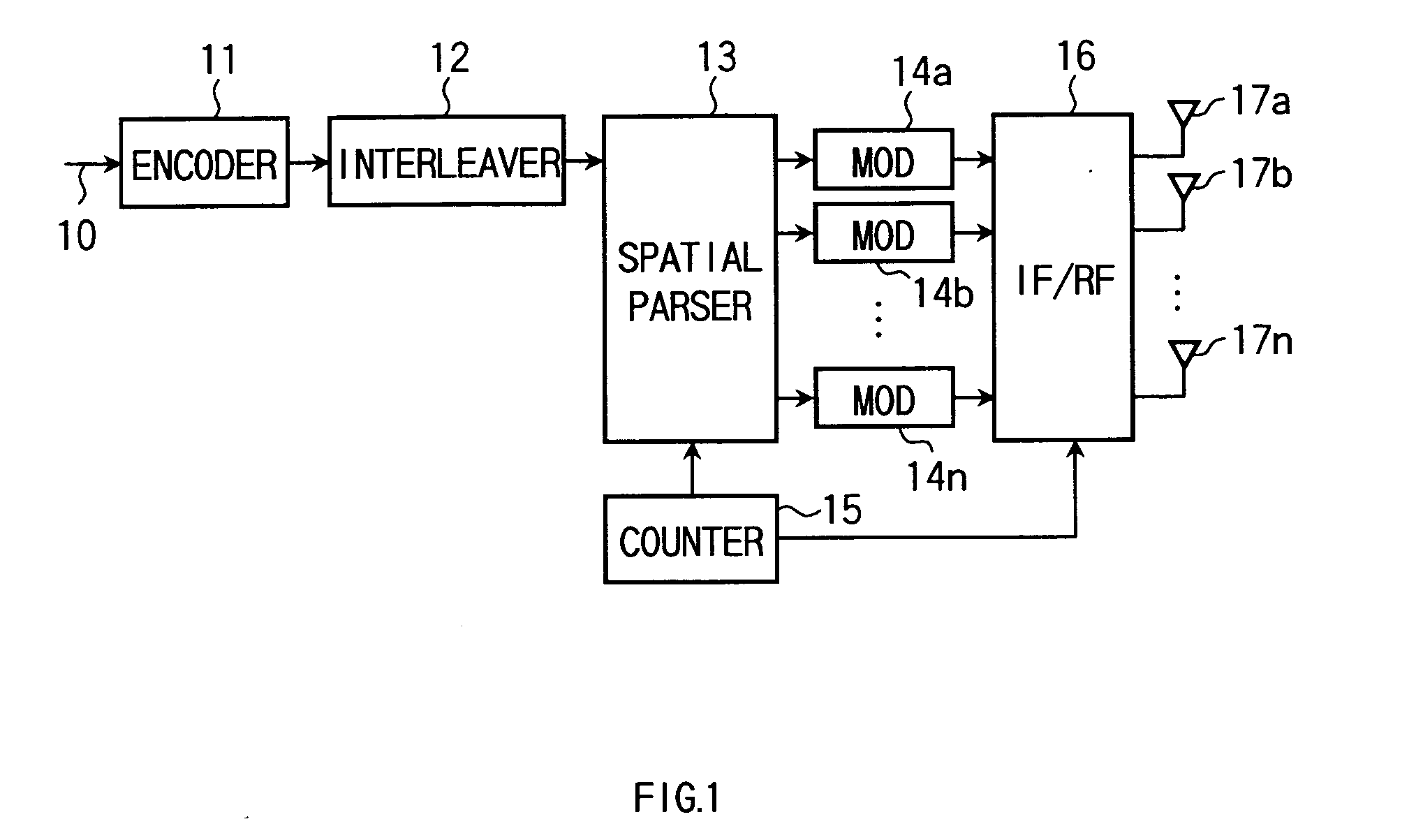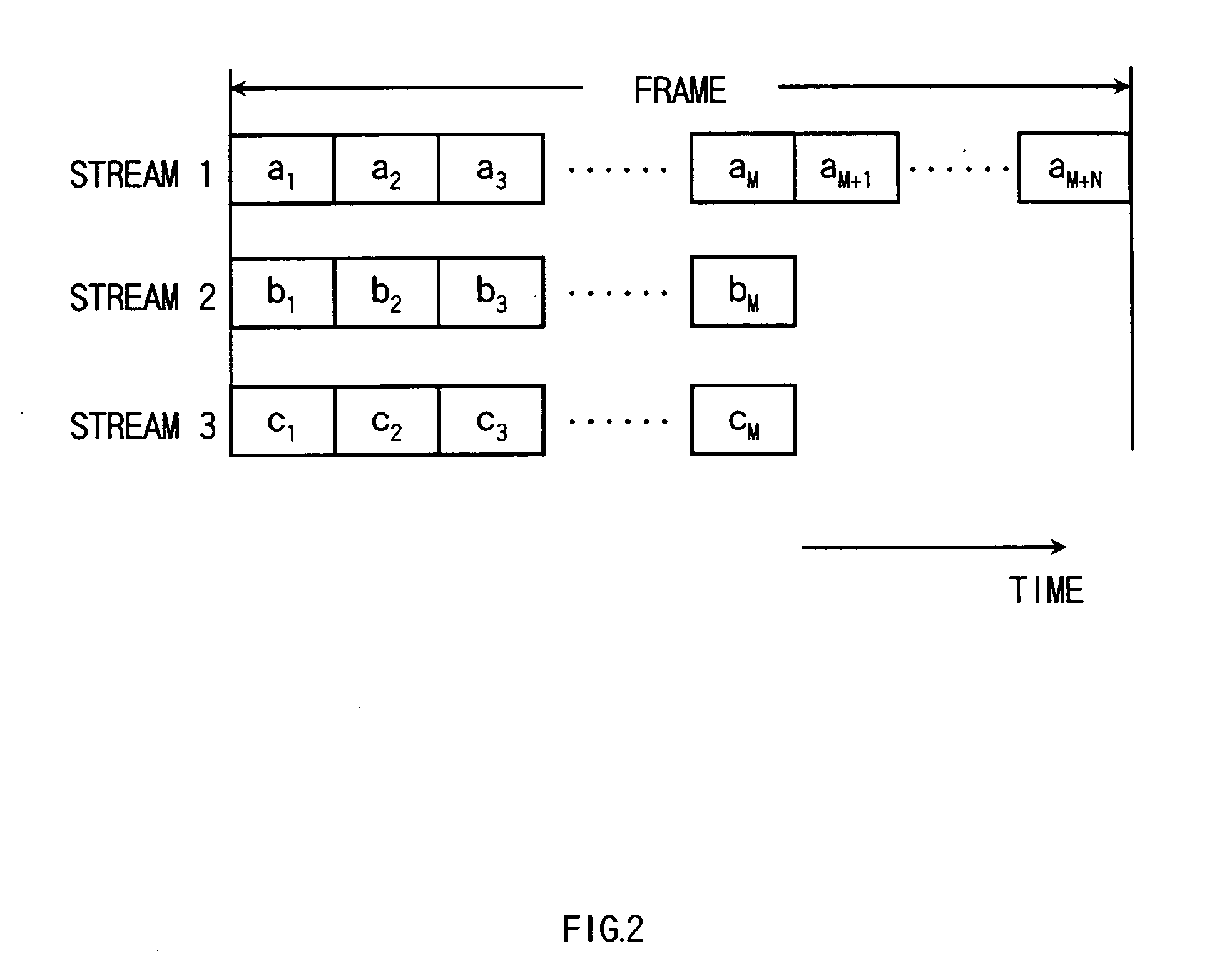Wireless transmission method and wireless transmitter having a plurality of antennas
- Summary
- Abstract
- Description
- Claims
- Application Information
AI Technical Summary
Benefits of technology
Problems solved by technology
Method used
Image
Examples
first embodiment
[0029] Referring to FIG. 1, description is made on a transmitter according to a first embodiment of the invention. FIG. 1 is a physical layer in the transmitter to which data to be transmitted (bit string) 10 is inputted per the transmission unit (e.g. frame or packet) from the higher layer. For example, for a wireless LAN, the data 10 is allocated first with a known signal for channel estimation and AGC (automatic gain control) and then with a data signal, in each transmission unit thereof. The inputted data 10 is subjected to error-correction coding by an encoder 11 and further interleave processing by an interleaver 12, followed by being inputted to a spatial parser 13.
[0030] The spatial parser 13 divides the input data into a plurality of streams in the same number as the transmission antennas according to an instruction from a counter 15, or outputs it as one stream without division. Where the spatial parser 13 divides the input data into a plurality of streams, the streams ou...
second embodiment
[0047]FIG. 5 shows a transmitter in a second embodiment as a modification to the transmitter in the first embodiment of the invention. The data to be transmitted 10, before being encoded, is divided by a spatial parser 13 into streams and then subjected to encode and interleave, stream by stream, by encoders 11a, 11b, . . . , 11n and interleavers 12a, 12b, 12n. The data, after encode and interleave processed, is inputted to the modulators 14a, 14b, . . . , 14n. The processing at the modulators 14a, 14b, . . . , 14n and the subsequent is similar to that of the first embodiment, hence omitting of explanations.
[0048] The spatial parser 13 makes a processing similarly to the first embodiment, excepting in that there is an input of pre-encode data. Consequently, the second embodiment can enjoy the effect similarly to the first embodiment. In the second embodiment, the receiver is satisfactorily similar to that of the first embodiment.
third embodiment
[0049] In a transmitter according to a third embodiment of the invention, there are inserted CDD (cyclic delay diversity) processors 18a, 18b, . . . , 18n and switches 19a, 19b, . . . , 19n between the modulators 14a, 14b, . . . , 14n and the IF / RF stage 16 as shown in FIG. 6, in the transmitter of FIG. 1. The switches 19a, 19b, . . . , 19n are controlled according to an instruction from the counter 15, to select any of an output of the modulator 14a, 14b, . . . , 14n and an output of the CDD processors 18a, 18b, . . . , 18n.
[0050] Using FIGS. 7 and 8, description is made on the operation of the transmitter of FIG. 6. The operation is similar to that of the first embodiment except for the CDD processors 18a, 18b, . . . , 18n and the switches 19a, 19b, . . . , 19n. Namely, provided that the number of symbols is M+N (M and N are integers equal to or greater than 1) in the transmission unit of the data 10, the spatial parser 13 performs a stream demultiplexing operation during the per...
PUM
 Login to View More
Login to View More Abstract
Description
Claims
Application Information
 Login to View More
Login to View More - R&D
- Intellectual Property
- Life Sciences
- Materials
- Tech Scout
- Unparalleled Data Quality
- Higher Quality Content
- 60% Fewer Hallucinations
Browse by: Latest US Patents, China's latest patents, Technical Efficacy Thesaurus, Application Domain, Technology Topic, Popular Technical Reports.
© 2025 PatSnap. All rights reserved.Legal|Privacy policy|Modern Slavery Act Transparency Statement|Sitemap|About US| Contact US: help@patsnap.com



